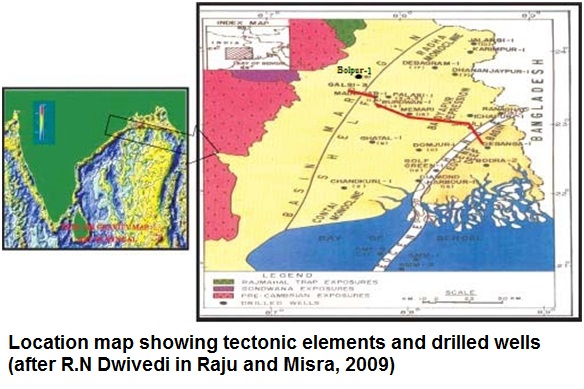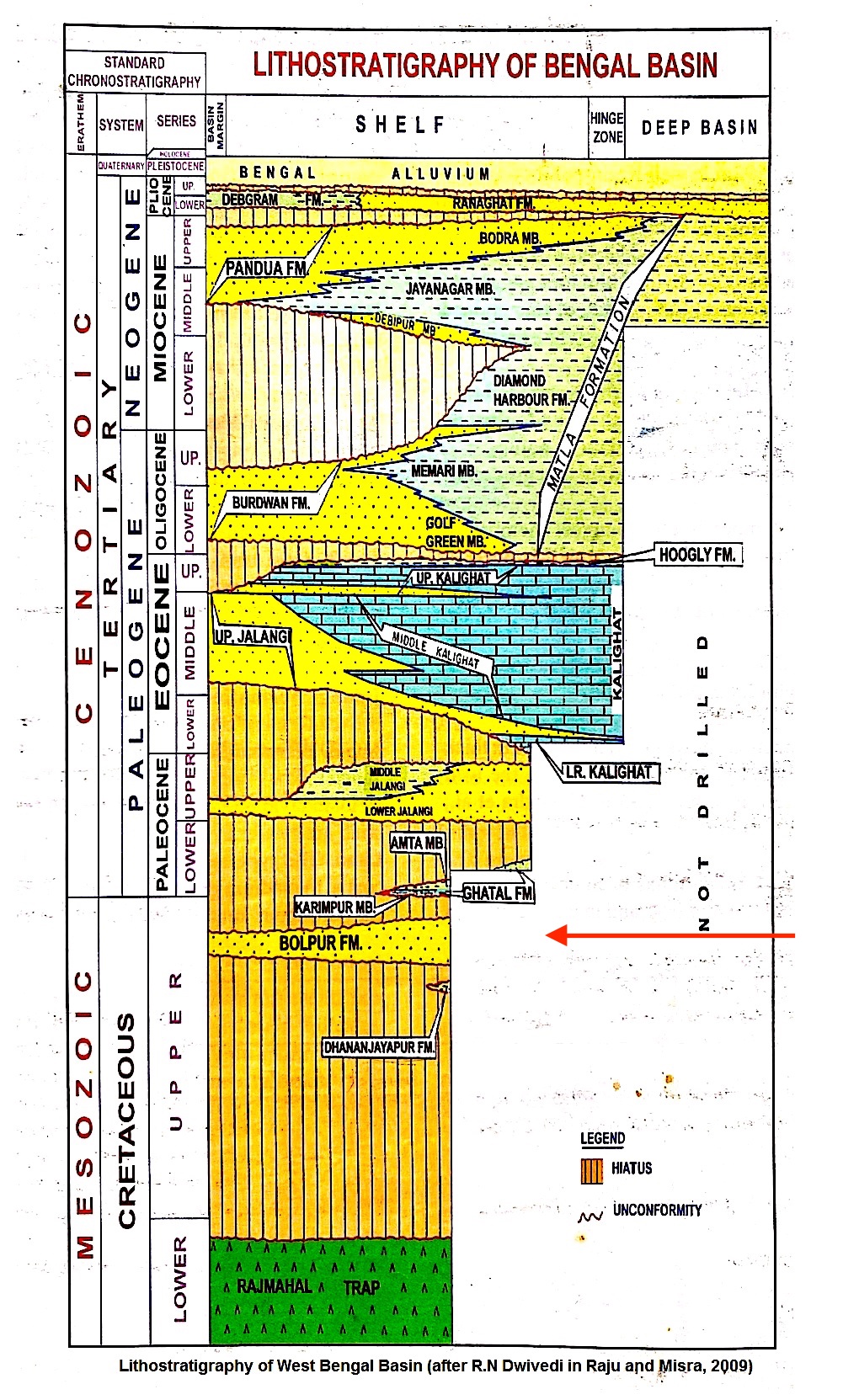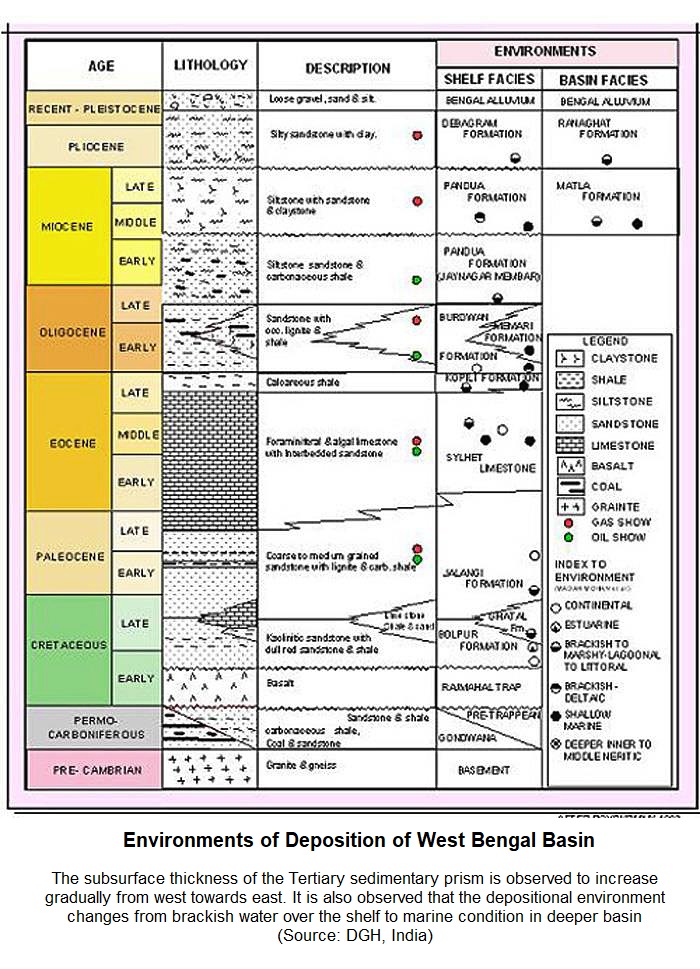Bolpur Fm
Type Locality and Naming
Subsurface of Bolpur in West Bengal, India (23°37'46N; 87°45'25E). Type section is in the well Bolpur - 1, Interval is 1095-1250 m and thickness is 155 m. [Original Publication: Biswas et al., (1963) Results of exploration for Petroleum in the Western part of Bengal Basin, India. Proc. 2nd Symp. Dev. Petrol Res. ECAFE Mins. Res. DeVol. Ser No. 18, pt 1, pp. 241-250.]
[Figure 1: Location map showing tectonic elements and drilled wells (after R.N Dwivedi in Raju and Misra, 2009)]
Lithology and Thickness
Coarse-grained sandstone and conglomerate. In the type section, the formation is represented by coarser, occasionally pebbly, greenish sandstone (weathering product of Rajmahal Traps Fm basalt) with red clay or claystone. Bottom part of the section is represented by trap basalt-clast conglomerate (Chandra et al., 1993). In the type section, it is 155 m, maximum thickness of 388 m in Bolpur-1.
[Figure 1: West Bengal Basin lithostratigraphy (after R.N. Dwivedi in Raju and Misra, 2009) with red-arrow showing position of this formation]
Relationships and Distribution
Lower contact
Lower boundary is unconformable with the Rajmahal Traps Fm.
Upper contact
Regional extent
Present in all the wells drilled in Baidyapur Depression and in the eastern part of Radha Monocline. In consideration of the lithological composition, a stratigraphic position in the succession and the age of the Bolpur Formation, it could be conveniently correlated with the subsurface Shibganj Trapwash Fm of the shelf area of northern Bangladesh and the Mahadek Fm of Assam, India.
GeoJSON
Fossils
No foraminifera has been found in the formation but it contains rare examples of fossil fruits (gyrogonites) of Chara and brackish lagoonal ostracodas from its transitional zone with the overlying Jalangi Formation. It also contains primitive dicotyledonous pollen at places. Poorly preserved spore and pollen assemblage.
Age
Depositional setting
Alluvial fan. The formation in type section is mainly a freshwater deposit with the upper part at some places associated with the estuarine deposition.
[Figure: Environments of Deposition of West Bengal Basin (from dghindia.gov.in)]
Additional Information


